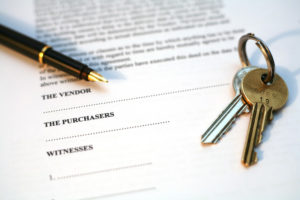Conveyancing is a legal term used to describe the process in which a property’s ownership is passed on from one person to another. Conveyancing of a property is most of the time done by a conveyancer who is licensed or sometimes you can do it yourself, though it is not advisable.
This service is offered by many local solicitors; however, it can be very expensive, and there are often many hidden charges.
A new service offered by My Conveyancing Specialist is set to shake up this market, buy providing an instant online quote that will provide their best price directly to the client.
All the customer needs to do is enter their property details and location, and the system will then search its extensive database of conveyancing solicitors and display the best price its finds depending on the data entered.
My Conveyancing Specialist then provides:
Full online conveyancing quote in seconds
Fixed Fee Quote
No Move No Fee Guaranty
This service will then complete the whole conveyancing process from quote to completion.
To try this service click Get Quote
If you want to know the full conveyancing process read below.
The processes involved in conveyancing for the buyer are as follows:
- The person interested in purchasing the property makes a proposal on regarding the property, the seller then accepts the offer
- The buyer’s coveyancer is then informed of the seller’s acceptance of the offer presented.
- The buyer then proceeds and makes plans for a survey of the property he/she wishes to purchase.
- The buyer’s conveyancer then confirms the instructions by the letter that sets out the fixed purchasing fees and the business terms.
- The contract pack is then obtained from the seller by the buyer’s conveyance.
- The contract is reviewed by the buyer’s conveyancer then he makes the required searches and goes ahead to obtain a copy of the mortgage offer.
- The seller and the seller’s conveyance then go ahead to answer the enquiries from the pre contract and then return the document to the buyer’s conveyancer.
- The buyer’s conveyance then reviews the answers on the pre-contact and reports back to the buyer on the contents that are in the contract pack, the results of the searches conducted, the pre-contract enquiries and the offer on the mortgage. The buyers will then go ahead and consider the report and make inquiries about issues that are unclear.
- If the buyer is satisfied and ready to proceed, then arrangements are made for the buyer’s conveyance to receive the cash deposit in preparation to exchange the contracts.
- The buyer and the seller then agree on a day of completion. The contracts are then exchanged formally. This therefore means that both parties are committed legally to the transaction at hand.
- The buyers conveyancer goes ahead to prepare a draft transfer for the title deed and a completion form and they are sent to the sellers conveyance for the completion of the transaction.
- The seller’s solicitor will then approve the draft transfer of the deed and a final copy will be made.
- The completion statement is then prepared by the buyer’s conveyancer.
- The seller then vacates the property on the date that had been agreed upon on completion. The sale proceeds are then sent to the seller’s conveyance by the buyer’s conveyancer.
- The title deeds together with the transfer deed are sent to the buyer’s conveyancer.
- The buyer’s conveyancer then sends the stamp duty that is to be paid to Her Majesty’s Revenue and Customs, and then he/she receives the transfer deed, the title deed and proof that the seller has made payment regarding any existent mortgage.
- The property is then registered to the Land Registry by the buyer’s conveyancer.
- The copy of the registered title from The Land Registry is received by the buyer.
The conveyancing process when selling your property:
- The seller looks for a conveyance.
- The seller’s conveyancer reads through the instructions of the letter that sets out the terms of the business and the fixed costs.
- The sellers conveyance the carries out verification of the required documents.
- The title deeds are then obtained from the title deed holder and other documents that are required by The Land Registry and also details on the amount of any existing mortgage.
- The seller’s conveyancer then sends the supporting documents and the draft contract to the buyer’s conveyancer.
- The seller and the seller’s conveyancer then answer any questions that arise from the pre contract enquiries.
- The buyers conveyance then gives a confirmation that they are satisfied with the answers provided from the pre contract enquiries
- The buyer and the seller then agree on a date if completion and they formally exchange the contracts.
- The buyer’s conveyancer then drafts a transfer deed and sends it to the seller’s conveyance.
- The transfer deed is checked by the seller’s conveyancer and sends it to the seller for the signature preparation for completion.
- The seller must then vacate the property at the time that had been agreed on and make the necessary arrangements to hand over the keys to the property
- When all the required payments have been made then the money that remains is sent to the seller, this is usually done through a bank transfer on the completion day.
Whether it is buying or selling a property there are things to be considered, if you choose the right partner for your conveyancing then you are sure to get the best professional services to help your conveyancing process run smoothly and efficiently. As said it is possible to do it yourself, but why not let the professionals do it for you.
Has worked for many Internet marketing companies over the years, and has contributed to many online publications. If there is a story, he will find it.
